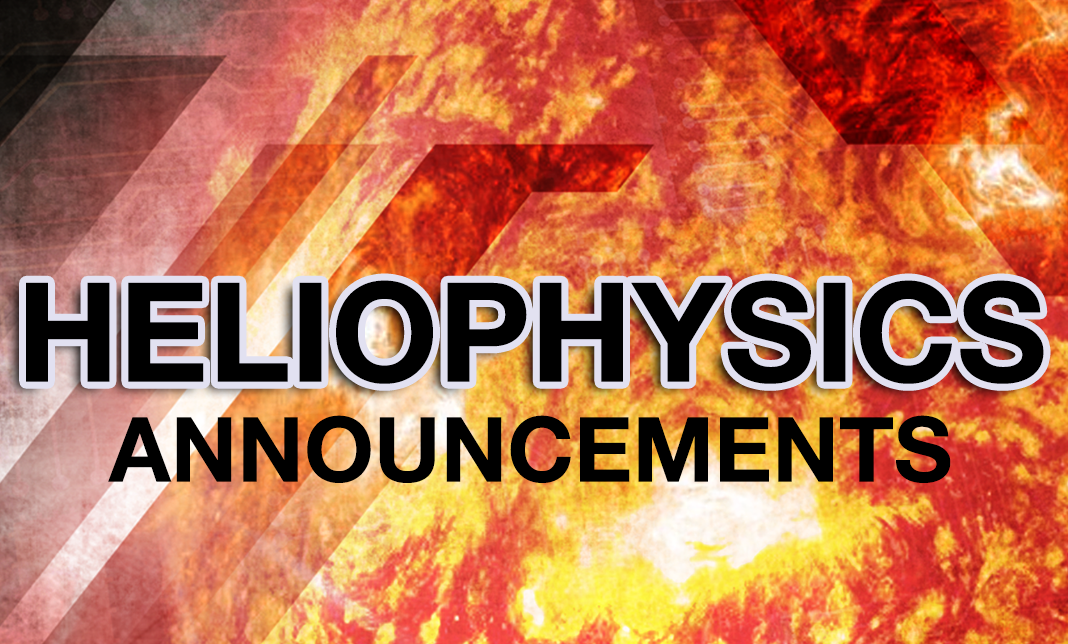On June 7, 2024, NASA selected Phase I Small Business Innovation Research (SBIR) awards from 299 proposals submitted by small businesses across the country. The following projects are relevant to Heliophysics. For more information about these projects, contact the PI company directly.
| Project | Principal Investigator | Company | Description |
|---|---|---|---|
| An Advanced Surface Flux Transport Model for Space Weather | Jon Linker (linkerj@predsci.com) | Predictive Science Incorporated | This project will develop an Open Source Flux Transport model that will acquire and assimilate solar magnetograms and rapidly produce multiple realizations at high resolution that estimate the present state of the Sun’s surface magnetic field to enable space weather models to produce more accurate results predictions. |
| Containerized Models to Predict Ionospheric Scintillations | Jeffrey Marino (jmarino@ensembleconsultancy.com) | Ensemble Government Services, LLC | This project will develop a pipeline targeting ionospheric scintillation characterization, monitoring, and prediction specifically to deliver precise scintillation indices estimates for amplitude and phase through the use of Machine Learning. |
| Applications for Differentiating Cybersecurity and Space Environment Hazards to Satellites | Janet Green (jgreen@spacehaz.com) | Space Hazards Applications, LLC | This project aims to provide a toolset to give commercial and government satellite operators real-time and retrospective awareness of space weather hazards from both man-made (cybersecurity) threats and natural hazards from the space plasma and radiation environment. |
| Commercial Data Assimilation Tool for Operational Thermospheric Density | Shaylah Mutschler (smutschler@spacewx.com) | Space Environment Technologies | This project will provide a commercial data assimilation tool that combines various data sources to provide a corrected thermospheric nowcast global density state. This nowcast corrected global density state can then be combined with Space Environment Technologies’ (SET) operational forecast space weather indices to produce a forecast 2- to 3-days in the future. |
| Enhanced System-Level Single Event Effects for Space Weather Operations | Zachary Robinson (zachary@5thgait.com) | Fifth Gait Technologies, Inc. | This project will enhance the Space Ionizing Radiation Environment and Effects (SIRE2) family of tools to improve the ability to calculate the expected upset rate inside a simulated electronic board or package at the system-level for space weather operations |
| Production of Magnetic Core Materials for Flux-Gate Magnetometers | Edward Salley (esalley@skyvisionsciences.com) | SkyVision Sciences, LLC | This project will develop a process for fabricating Mo-Permalloy (6-81.3) which is a material used as the core material in advanced magnetometers and is becoming increasingly difficult to source. |
| THz LO Sources for Heliophysics | Theodore Reck (reck@vadiodes.com) | Virginia Diodes, Inc. | This project will develop a new local oscillator (LO) source in the 1 to 5 THz frequency range which can be used in the measurement of wind and temperature in the lower thermosphere and E-region ionosphere using terahertz limb sounding measurements of the OI thermal emissions at 2.06 THz or 4.75 THz. |
| Quasistatic Release Mechanism | Oliver Fildes (ofildes@helio.space) | Heliospace Corporation | This projects will develop a resettable release mechanism that exports near-zero shock during actuation and can be utilized for the purposes of deploying observatory systems and subsystems. The proposed release mechanism is designed to be field resettable which enables a customer to avoid expensive and time consuming off-site reset and refurbish apparent with non-field resettable devices and is scalable to CubeSat applications all the way up to flag ship space telescopes. |
| Solar Update Neural Network for Improved Event Prediction (SUNNIE) | Akhil Sheoran (akhil@phase3physics.com) | Phase III Physics, LLC | This project will develop a Solar Update Neural Network for Improved Event prediction (SUNNIE) by using a Physics-Informed Neural Network (PINN) architecture to enhance existing models for Solar Energetic Particle (SEP) event forecasting by integrating underlying numerical solvers directly into the training cycle. |

